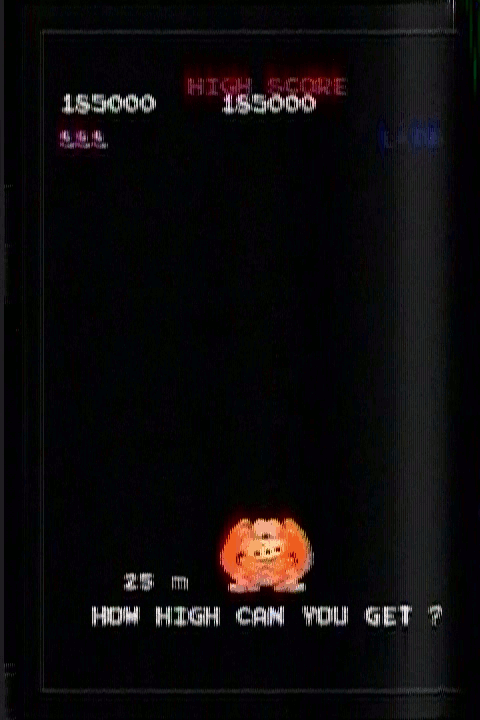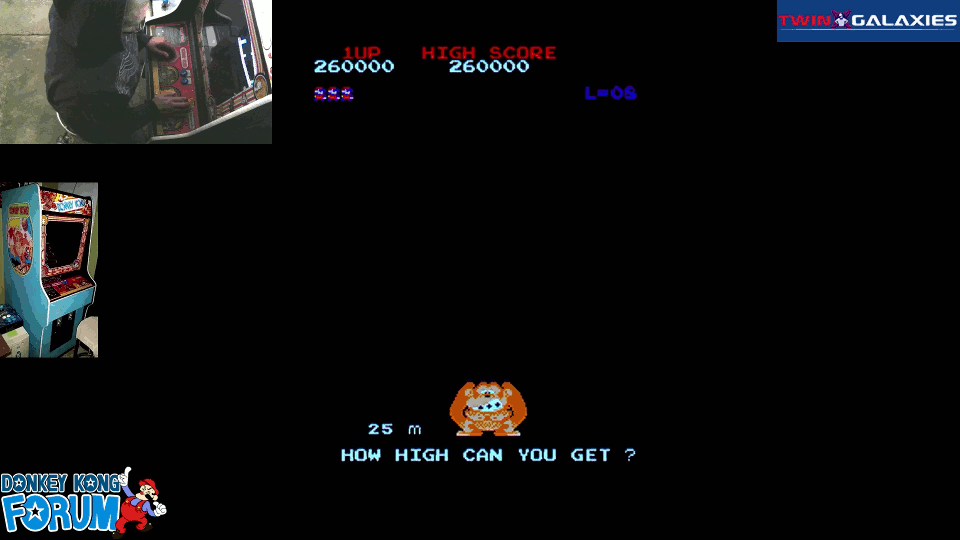King of Kong's Billy Mitchell gets kicked off the Donkey Kong leaderboard for allegedly playing on MAME, not real hardware
And playing on MAME may have opened up the door to cheating.

Arcade scene legend Billy Mitchell was essentially cast as the villain in the 2007 documentary The King of Kong, about the contest to break Donkey Kong's high score record. Though Mitchell hasn't held the top score in Donkey Kong for years, he's still a memorable figure. As of today, however, his highest scores are under scrutiny for being potentially fraudulent.
The record keepers at Twin Galaxies take the scorekeeping business seriously -- so seriously, a deep investigative post from member Xelnia made Friday aims to prove Mitchell actually recorded several of his high scores on the arcade emulator MAME, not on the original arcade hardware as he claimed. Xelnia, whose name is Jeremy Young, removed Mitchell's scores from the Donky Kong leaderboard, knocking Mitchell's 1.062 million score out of a top 20 spot. One of the current top 3 scores, of 1,206,800, was actually recorded on MAME as well. So why does it matter?
One pretty crucial reason. Scores recorded on arcade hardware and MAME are evaluated and approved differently. That means Mitchell's scores weren't given the kind of scrutiny they otherwise would've if they were known MAME recordings, and that opens up the door to cheating.
On MAME, it's possible to record an .INP file of a play session -- a recording of your inputs that can be played back in MAME. "While clearly MAME, there is no way to tell exactly how these games were performed," writes Young. "It's possible they were recorded in one shot. Given the play style in Billy's videos, it's more likely that vanilla MAME's INP recording feature was abused, in which a person can re-record an INP as many times as they wish to craft their desired performance."
Wes Copeland, who currently holds the second highest Donkey Kong score in the world, offered a bit more insight on Twitter:
MAME scores have a different means of verification to ensure that save states, pauses, and replay splices aren't used. As a result, any score that is MAME that does not fit these adjudication standards must be disqualified.February 2, 2018
Copeland also pointed out how the RNG in Billy's supposed arcade direct feed runs also played out unusually well in his favor:
Most of Billy's points in his direct feed games comes from blue barrel smashes. These are completely RNG-based, yet somehow his averages are way above the mean 🤔 pic.twitter.com/WiYrqSIVWoFebruary 2, 2018
Of course, that's not proof that Mitchell played on MAME as opposed to on arcade hardware, or that he doctored his games. Young's proof is in a series of very technical comparisons between Mitchell's supposed direct feed footage, other Donkey Kong direct feed footage, and MAME footage. MAME's emulation isn't quite arcade perfect, specifically in the way it renders the image, and that's what Young zeroed in on.
Keep up to date with the most important stories and the best deals, as picked by the PC Gamer team.
One example: "Another MAME behavior that is worth pointing out is rotation. Although we see DK in the correct orientation when we play on a real cab, the video is actually generated on its side, with the top of the screen being on the right-hand side. MAME also emulates this incorrectly... Billy's 1.047M and 1.05M games show the incorrect rotation."


You can follow along with the rest of the technical breakdown (and likely the unfolding drama) in the forum thread here. Even when emulation seems indistinguishable from the real thing, there's always going to be someone who understands the intricacies of videogame hardware intimately enough to know the difference.

Wes has been covering games and hardware for more than 10 years, first at tech sites like The Wirecutter and Tested before joining the PC Gamer team in 2014. Wes plays a little bit of everything, but he'll always jump at the chance to cover emulation and Japanese games.
When he's not obsessively optimizing and re-optimizing a tangle of conveyor belts in Satisfactory (it's really becoming a problem), he's probably playing a 20-year-old Final Fantasy or some opaque ASCII roguelike. With a focus on writing and editing features, he seeks out personal stories and in-depth histories from the corners of PC gaming and its niche communities. 50% pizza by volume (deep dish, to be specific).

